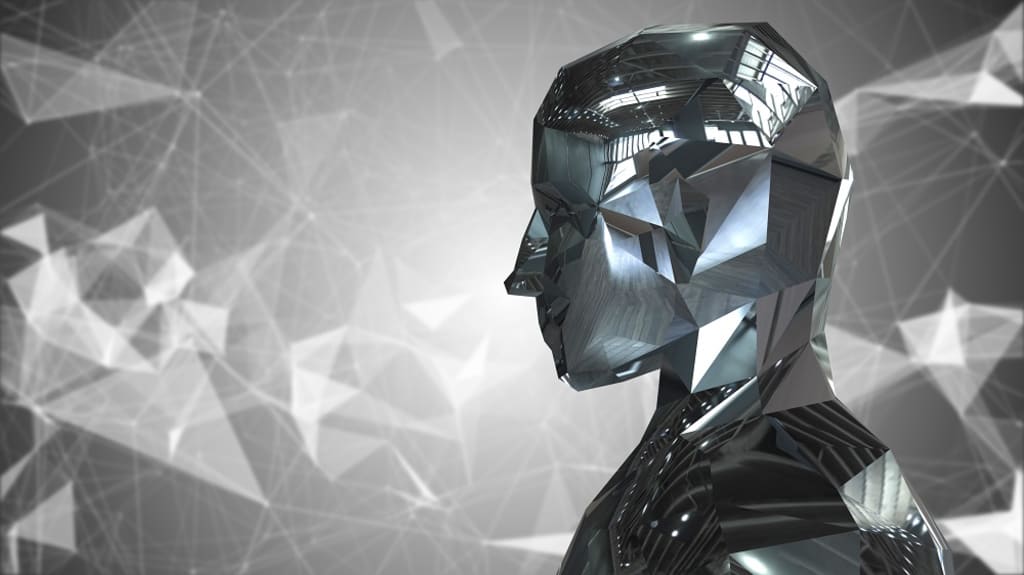How Artificial Intelligence Leads to Smarter Diamond Grading
Here's how artificial intelligence is leading to smarter diamond grading, as well as a smoother sorting process in the near future.

We're in an age where artificial intelligence and machine learning are reshaping how many industries conduct their business. This technology is now poised to disrupt the diamond grading process, which could eventually lead to other great innovations in the resale diamond supply chain. This article covers how artificial intelligence is leading to smarter diamond grading, as well as a smoother sorting process in the near future.
It is one of the hottest topics in the tech world at the moment and is quickly becoming a big topic among leaders of numerous industries. Chances are, it is a part of your daily life in more ways than you ever took time to imagine.
It manages everything from online banking, the camera on your mobile device (among other applications running on your smartphone), to what advertisements Google shows you as your browsing the web.
You have possibly seen YouTube videos where it is discussing how it will enslave humankind at some point in the future. Who knows if it is trying to be humorous or if in actuality it means what it says? Whatever the case, it is one of humankind’s greatest technological achievements.
Artificial intelligence is a revolution in technology, and it is continuing to sweep through our daily lives, promising to usher in an entirely new era. Additionally, machine learning (ML) should never be mistaken for artificial intelligence (AI), though the two work hand-in-hand.
According to an article in Forbes, “AI means that machines can perform tasks in ways that are "intelligent." These machines aren't just programmed to do a single, repetitive motion—they can do more by adapting to different situations.”“Machine learning is technically a branch of AI, but it's more specific than the overall concept. Machine learning is based on the idea that we can build machines to process data and learn on their own, without our constant supervision,” the article continues to explain.
AI has added diamond grading to its repertoire.
Diamond grading has always been a tedious and complicated ordeal, full of difficult manual processes only a few people understood. To further complicate matters, limitations of human perception and eyesight resulted in doubt being raised concerning the actual quality of standardized diamond grading methods.
These doubts have led variances and discrepancies from one diamond grade to the next, including the standards of individual gem labs which all say their grading method is the best. And when it comes to the average consumer, they have no way of knowing whether or not the grade of a diamond is correct.
A perfect example is cut grading, which is an assessment of a diamond's cut after it has been polished. The quality of a diamond's cut and polish directly influences a diamond's overall appearance and total value.
Also, despite the common misconception a "cut grade" involves its shape (princess, round, emerald, etcetera), the term relates to the way the facets of a diamond intersect. This intersection of sides is what defines a diamond's proportions and unique dimensions.
For decades, the cut grading of a diamond was manually done by a professional gemologist. In 1992, things changed as special cut grading software was introduced to the industry that allowed the process to be done by computer which automated the measurement process of the diamond's proportions.
Though that was over three decades ago, the new computer-based cut grading technology delivered a quality of accuracy impossible for humans to match. As has happened in the realm of technology as a whole, cut grading technologies, which include optical scanners and analyzing software, have increased in their level of sophistication. At present, today's cut grading machines are at micron precision.
AI has taken full authority of diamond grading.
The development of AI in diamond analysis progresses expanding capabilities such as full AI-based diamond grading suites as early as 2016, which measured a diamond's color and clarity. In 2018, the first fully automated, AI-driven diamond grading laboratory opened in Israel.
The looming question for those in the diamond industry is what effect will AI-based diamond grading tech have on the diamond industry as a whole. As for now, the full impact is virtually unknown, and will only become clear gradually as Ai technology continues to advance. Nevertheless, below are at least four foreseeable ways AI-based diamond grading technology is impacting the global diamond market at present.
1. Increased Reliability in the Diamond Grading Process
AI-based diamond grading gets rid of the element of human error. Of course, it is not to say that AI is ready to replace the skill, knowledge, and expertise of gemologists. Instead, it presents a standard of accuracy free of human bias.
This standard of quality in the diamond industry is much needed, forcing gem laboratories around the world to improve their quality and consistency of diamond grading.
It will also force them to adhere to grading standards set by the industry. The increased reliability will benefit all parties in the diamond supply chain; from those in charge of exploration and mining of the stones to the customer who purchases it after the manufacturing process is finished.
2. Increased Consumer Confidence
With the rise in lab-grown diamonds, as well as the changing habits of consumers as Millennials and Generation Z flood the market, the diamond industry has experienced a number of challenges never seen before. As consumers become more aware of AI-driven diamond grading technology, their confidence in the diamond industry grow.
3. Constantly Improving Accuracy
As covered earlier in this article, machine learning is what allows artificial intelligence to learn with each interaction it has with the real world. In this way, AI-driven diamond grading technology becomes more "intelligent" and more accurate with every diamond it inspects.
Machine learning collects data from the AI-driven devices and uses it to finetune its algorithms. It requires little to no need for human input. The accuracy and efficiency of AI diamond grading devices may get to a point where absolutely no human interaction is needed at all.
4. From Grading to Managing Diamond Inventory
AI-based diamond grading systems have the capability of streamlining how diamond manufacturers sort their inventory. By typing the diamonds according to the needs of specific markets throughout the world, the diamond business would become much more efficient and consumer-friendly. Take diamonds' grades as a 12 for clarity but featuring numerous variations.
An AI grading and sorting system can select all of the diamonds without black conclusions much more quickly, accurately, and efficiently than how things were done once before. Retailers can utilize such sorting filters to build up a collection of diamonds that satisfy their specific market.
About the Creator
Andrea Dawson
A fitness blogger and a personal trainer.






Comments
There are no comments for this story
Be the first to respond and start the conversation.